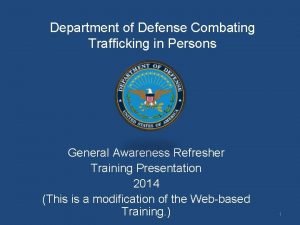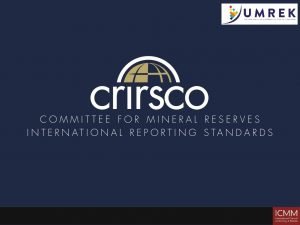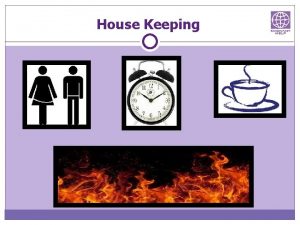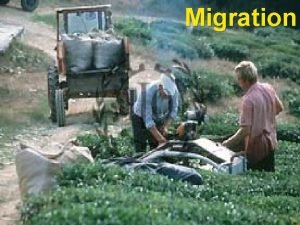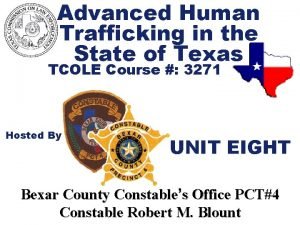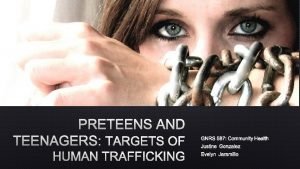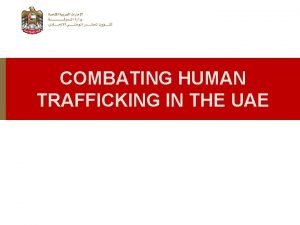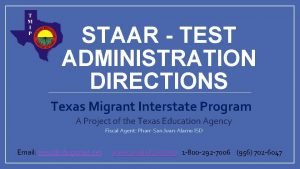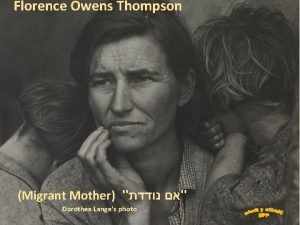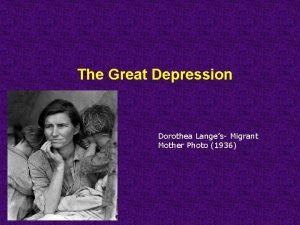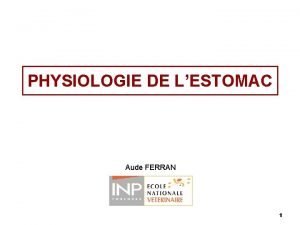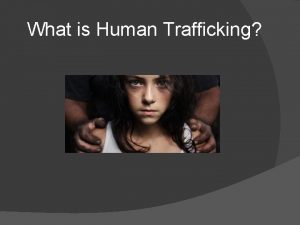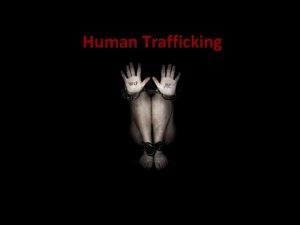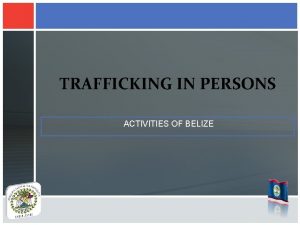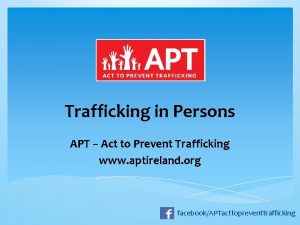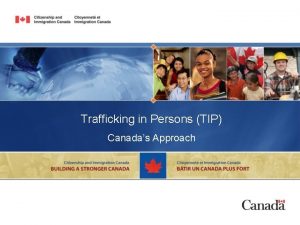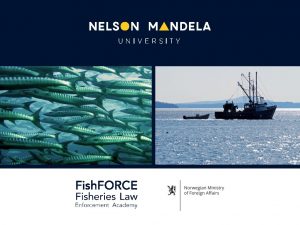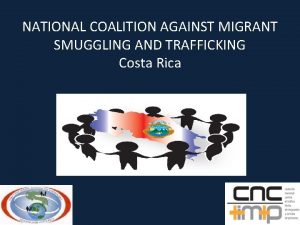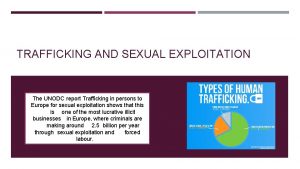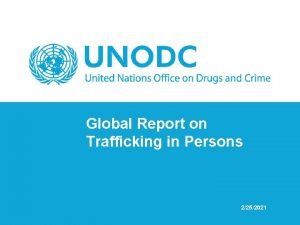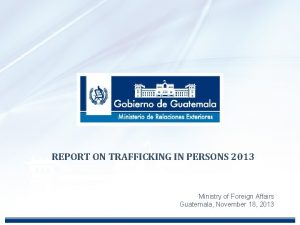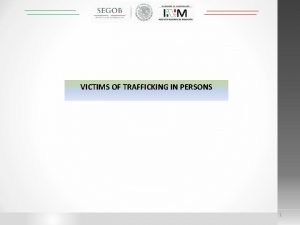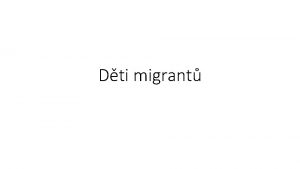NATIONAL REPORT ON TRAFFICKING IN PERSONS AND MIGRANT


















- Slides: 18

NATIONAL REPORT ON TRAFFICKING IN PERSONS AND MIGRANT SMUGGLING, CHALLENGES AND PROJECTIONS IN COMBATING THESE CRIMES June 2012

INTRODUCTION Southern Border of Mexico • Convergence of commercial, financial, and tourism migration flows; • Difficult geo-political and social conditions; • Illegal activities, local, national, and international networks. The Phenomenon of Migration Migrants in vulnerable situations; Convergence with organized crime; Crime Committee risk for institutions of the Mexican State. The National Report • A strategic vision at the southern border in regard to the presence of organized crime; • Developing institutional cooperation mechanisms for investigation, persecution, and prosecution of the crimes of migrant smuggling and trafficking.

TRAFFICKING IN PERSONS Southern Border üOrigin ü Transit ü Destination Irregular Migration Flows -- Regional -- Extra-continental • 2006 - 2011: Global economic crisis + labour crisis + stricter migration policy in the United States = a significant reduction in migration flows = presence of criminal groups in Mexico = increased vulnerability of migrants in transit. • Foreign nationals sheltered by the National Institute of Migration (INM) in 2006: 182, 705. • Foreign nationals sheltered in 2011: 66, 764. • Decrease: 36. 54%. • Nationalities: 33, 006 from Guatemala, 19, 425 from Honduras, 9, 103 from El Salvador, 978 from the United States, 748 from Nicaragua, 758 from Cuba, 539 from Ecuador, 451 from India, 232 from Colombia, 179 from China, 136 from Eritrea, 112 from Venezuela, and 1, 097 from other countries.

Extra-continental Migrants Sheltered in 2011 • Asian: 831 sheltered (149 deported); • African: 287 sheltered (11 deported); • Cuban: 758 sheltered (a significant increase in the number of entries); 71. 63% entered through Chiapas (130 deported).

Extra-continental Migrants Routes of Extra-continental Migrants in Transit through Mexico • 17 identified routes; • • 43. 75% arrived in Guatemala City by air; Causes: Visa suppression for nationals from certain countries. Transit Routes through Mexico • In 2011, nine routes were identified; • Some are also used for trafficking of firearms and drug trafficking from Central America. See the 2 slides below.

Extra-continental Migrants (Routes)

Extra-continental Migrants (Routes)

Risk Routes • As Stated by Migrants Victims of Abduction = Three routes have been identified; • Places of origin: Chiapas and Tabasco, with records of violent incidents and abduction of migrants; • High risk areas: Tenosique, Tabasco; Orizaba, Coatzacoalcos, and Tierra Blanca, Veracruz and Ciudad Ixtepec, Oaxaca.

Institutional Actions • Most frequently used means of transportation: By land (public or private transportation and train); • The Federal Government has increased the number of actions on highways, railways, and central bus stations; • Actions of INM in 2011: 14, 905 immigration controls on highways (38, 576 migrants presented); 504 immigration controls on railways (3, 593 presented), and 15, 902 immigration verification visits (639 presented); • Actions of the Federal Police Force, through the Regional Security Division: Rescue and detention of irregular migrants in the states of Campeche (113), Chiapas (2, 416), Quintana Roo (320), and Tabasco (140); • Strategic intelligence actions, tactics and operations to combat and persecute migrant smuggling in 2011: 51 active organizations involved in migrant smuggling have been identified in the states of Baja California (8), Chiapas (24), Coahuila (1), State of Mexico (2), Oaxaca (1), Puebla (1), Quintana Roo (3), Sonora (1), Sinaloa, (1), Tabasco (5), Tamaulipas (1), Veracruz (3). 145 individuals involved in the networks have been identified.

TRAFFICKING IN PERSONS Women Transnational organized crime Trata de Girls Regional organized crime Personas Boys Local organized crime Domestic organized crime • Modes of operating that facilitate committing the crime; • Use of state-of-the-art technologies and infrastructure to operate, recruit, and capture (capturing victims anywhere around the world); • Operations in real time; • In Mexico, the primary area for capturing victims is the south-eastern region of the country; • Intelligence: In 2011, 10 federative institutions were identified with the highest rate of exploitation sites; • More than 54 sites where victims are exploited.

Capturing Areas

Local Criminal Organizations • In 2011, the intelligence services of Mexico identified 72 active trafficking networks: 29 in Chiapas, 9 in Puebla, 9 in Tlaxcala, 8 in the Federal District, 4 in Oaxaca, 4 in Tabasco, 2 in Guanajuato, 2 in Baja California, 1 in Campeche, 1 in Chihuahua, 1 in the State of Mexico, 1 in Querétaro, and 1 in Yucatán; composed of 158 men and 73 women.

Institutional Actions • PGR (FEVIMTRA), 2011: 238 prior investigations (38 persons brought before the authorities); • Regional Committee Against Migrant Smuggling and Trafficking: Aligning intelligence, ministerial, and police actions through an operative working group including representatives from federal institutions and the Attorney General’s Office of the Republic to deal with these criminal groups; • • Establishing and consolidating mechanisms to combat the phenomenon, such as: The Inter-secretarial Committee to Prevent and Punish Trafficking in Persons (CIPSTP); the Technical Support Group for the Framework Agreement to Prevent and Combat Abduction of Migrants; working groups and sub-committees within relevant institutions; Multilateral, regional, and bilateral cooperation: Mexico actively promotes – within the international sphere – strengthening multilateral, regional, and bilateral cooperation to actively combat migrant smuggling and trafficking, favouring the full implementation of existing mechanisms and forums.

Institutional Actions General Law to Prevent, Punish, and Eradicate the Crimes related to Trafficking in Persons and to Provide Protection and Assistance to Victims of these Crimes Advances regarding previous legislation: • Establishes competencies and coordination modes between federal, state, Federal District, and municipal governments; • Typifies the crime of trafficking in persons and related crimes and their punishment; • Establishes the obligation for PGR to create a victim and witness protection programme; • Redefines the composition, organization, operations, and powers of the Intersecretarial Committee; • Includes a chapter on preventing the crime, policies and programmes, identifying the most vulnerable areas and groups, and policies for priority assistance; • Crimes related to trafficking in persons, considered to be serious and perpetrated by organized crime groups; Alert systems and immediate action protocols to search and locate, in the case of boys, girls, and adolescents, together with members of the system, emergency corporations, the media, telecommunications service providers, NGOs, and the general public. •

Institutional Actions General Law to Prevent, Punish, and Eradicate the Crimes related to Trafficking in Persons and to Provide Protection and Assistance to Victims of these Crimes Criminal types that are reformed or added: 1. Slavery; 2. 3. 4. 5. 6. 7. 8. 9. 10. 11. Servitude; Prostitution of others or other forms of sexual exploitation; Labour exploitation; Forced labour or services; Forced beggary; Involving boys, girls, or adolescents in criminal actions; Illegal adoption of a boy, girl, or adolescent; Forced or servile marriage; Trafficking of organs, tissues, and cells of live human beings; Illegal biomedical experiments in human beings.

TASKS BEING IMPLEMENTED q Consolidating mechanisms for criminal intelligence exchange between security, justice administration, and border control and regulation institutions, with the aim of formulating strategies, plans, and strategic and tactic-strategic operations through identifying members, capacities, networks, and modes of operating, especially in the southern border region; q Strengthening intelligence efforts to process and prosecute cases based on testimonies of victims and best evidence-based investigation techniques; q Federal institutions should work in close collaboration and coordination with migrant shelters (Casa del Migrante), assistance centres, and shelters operated by civil society organizations in national territory; q In addition to the coordinated efforts and information exchange actions of federal and state institutions, participating in intelligence of finance and public credit institutions and establishing the route of money of criminal organizations in order to identify behaviour patterns of criminal networks.

TASKS BEING IMPLEMENTED q Consolidating joint efforts by authorities to address migrant smuggling and trafficking; q Establishing stricter border controls with state-of-the-art technologies to identify false documents in a timely manner and combat the method used by migrant smuggling organizations; q Consolidating the use of biometrics in Mexico, with the aim of helping prevent the establishment and sophistication of organized criminal networks in the country; q Addressing flows of extra-continental migrants and migrants with special nationalities, with the aim of identifying transnational criminal networks; q Improving, deepening, and widening cooperation schemes and mechanisms with countries in the region based on the principle of shared responsibility; q Coordinating efforts between the three powers of the State to strengthen the design and implementation of actions related to public policy on prevention.

de Thank you de Personas y
 Some common trafficking in persons contract violations
Some common trafficking in persons contract violations What is trafficking in persons
What is trafficking in persons A person's trash is another person's treasure
A person's trash is another person's treasure Competent persons report
Competent persons report Aims and objectives of human trafficking
Aims and objectives of human trafficking Advanced human trafficking #3271 test answers
Advanced human trafficking #3271 test answers Infested
Infested Human trafficking map
Human trafficking map 3271 advanced human trafficking
3271 advanced human trafficking Human trafficking
Human trafficking Human trafficking definition
Human trafficking definition Human trafficking
Human trafficking Combating human trafficking in the uae
Combating human trafficking in the uae 3271 advanced human trafficking
3271 advanced human trafficking Texas migrant interstate program
Texas migrant interstate program Florence leona thompson
Florence leona thompson Migrant mother analysis essay
Migrant mother analysis essay Pepsinogène
Pepsinogène Migrant hostel analysis
Migrant hostel analysis

